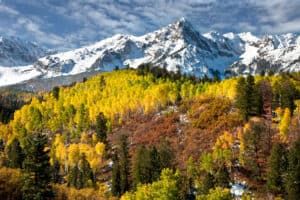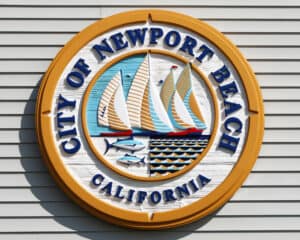
Living in the Carolinas means there’s never a shortage of fabulous weather and southern charm.
One of the most iconic examples of this is South Carolina’s thriving city of Charleston.
Named after King Charles II, settlers established the town of Charleston in 1670, making it the oldest town in the state.
Remnants of the past continue to enthrall tourists and locals alike.
Perfectly preserved in a pocket of time, the many forts, churches, and antebellum homes offer a glimpse into a bygone era alongside contemporary buildings and attractions.
If you’re curious about whether to call Charleston your new home, here are some pros and cons to guide you toward the right decision.
Pros and Cons of Living in Charleston, South Carolina

Whether you’re planning a move to Charleston for the warmer weather, a taste of history, or to spend some time experiencing the great outdoors, there’s plenty to get excited about when it comes to this city on the coast.
1. Warm Weather

Climate plays a vital role in any significant move.
You don’t want to move anywhere you’re uncomfortably hot or where you must suffer through the frigid cold either.
South Carolina acts as the perfect meeting point for those wanting a touch of warmth without enduring the sweltering summer heat of locations like Florida.
In a subtropical climate, the city sees a range of weather throughout the year.
Temps typically reach as high as the 80s and drop down as low as the 40s.
Snow is a rare occurrence, which means less shoveling for you and more time spent outdoors.
2. Seasonal Shifts

Though Charleston doesn’t get all four seasons like some cities in the northern states, there is a reasonably distinct shift in the weather from season to season.
Spring is the ideal time for travelers and families, offering cozy temperatures between 59 and 73ºF.
Colorful blossoms also come into full view alongside tasty berry picking excursions.
Summer kicks the temperatures up a notch, shooting the heat up to the high 80s for perfect beach day weather.
Unfortunately, temperatures don’t cool off until mid-fall, with September still coming in a little warm.
Once October hits, though, you’re sure to feel the crisp cool air in the mornings.
3. Soak Up the Sunshine

Sunshine plays a crucial role in, well, everything! It’s been proven to increase the hormone serotonin, which boosts people’s moods and makes them feel happy.
It’s also critical for gardeners who don’t want their gorgeous flowers dying at the first sign of fall.
Luckily, Charleston is full of sunny days—209, to be exact.
This number places it above the national average of 205 and ranks it among the best places in the country for absorbing that healthy dose of sunshine.
4. Explore the Beaches

Being so close to the coast, Charleston has several beaches nearby that are perfect for outdoor lovers and families.
Two of the most popular beaches are Sullivan’s Island and Kiawah Beachwalker Park.
The closest beach is Sullivan’s Island, which is less than ten miles from downtown.
It doesn’t require an entry fee, and pets are permitted only after attaining a permit beforehand.
Another popular location for enjoying the waves is Kiawah Beachwalker Park.
This 11-mile-long beach is located approximately 30 minutes outside of town and is both family and pet-friendly.
Entrance into the park requires a small fee, though there are season passes available for residents.
The park offers places for grilling and picnicking, and there are even areas where you can look for dolphins at low tide.
5. Go Deep Sea Fishing

With easy access to the coast also comes a massive opportunity for fishing out on the Atlantic Ocean.
Deep-sea fishing allows you to catch creatures you would never have access to in freshwater venues.
Some species include snapper, mackerel, sailfish, and marlin.
If you don’t have your own boat, several companies offer day trips and excursions out onto the ocean to show you some of the best locations to fish.
One place to start is the Tide Down Sport Fishing company.
6. Surfing and Kiteboarding

Charleston may not have waves like California or Hawaii, but it does get its fair share of good surf.
Surfing and kiteboarding are popular pastimes in the region as well as other water activities like kayaking and paddleboarding.
One of the best locations to surf is at Folly Beach.
Not only are the waves able to accommodate beginners and advanced surfers alike, but the beach also offers lessons and a surfing school.
7. Sailing is Big

Another favorite pastime of beachgoers and those who love the ocean is sailing.
The coast offers a pleasant, ever-flowing wind that makes cruising along the Atlantic, well, a breeze!
In addition, different areas of Charleston Harbor provide a unique experience directed toward the individual on the boat.
For those adventurous souls who love a little more wave activity in their ride, sailing out into the open harbor gives them all the thrill they need.
However, if a smoother ride is more your speed, then sailing closer along the Crab Bank in shallower water is what you should do.
8. Discover Other Surrounding Waterways

It’s not just the beach that draws many to this stunning locale.
Numerous rivers, creeks, and streams also call Charleston home.
Three major rivers run through Charleston: the Cooper, Wando, and Ashley Rivers.
These rivers primarily consist of blackwater and tidal streams, which means the waters might be smooth and easy in one area and choppy in the next.
The Ashley River is one of the more popular locations for kayakers and canoeists.
9. Tour the Parks

Charleston is perfect for the nature enthusiast if you have kids, pets, or simply love the outdoors.
There are tons of county parks in and around the city that extend far beyond the beach scene.
These places offer freshwater fishing docks, nature trails, boat launches, and so much more.
Some of the top sites to check out are Cypress Gardens, James Island County Park, and Palmetto Islands County Park.
10. The Stunning Architecture

Like many old cities in the South, Charleston has undergone centuries of changes and building construction.
As a result, the town is littered with architecture from every different period, including Colonial, Victorian, and Art Deco.
The Riviera Theater came alive during the 1920s when the free spirit of the Jazz Age popularized the Art Deco architectural style.
Remnants of the Victorian era remain evident in buildings like the Wentworth Mansion, now the #1 ranked hotel to stay in Charleston.
11. Enjoy the Southern Cuisine

There’s nothing quite like Southern food when it comes to that warm, comforting feeling of fullness.
Charleston does its southern roots proud with meals like shrimp and grits, cornbread, and the world-famous sweet tea.
Some of the best places to find these mouth-watering meals include Bertha’s Kitchen and Hominy Grill.
12. Taste Unique Charleston Classics

Every city has a few exceptional dishes that are hard to find anywhere else.
Being so close to the water, Charleston most notably incorporates seafood into traditional southern cuisine.
She Crab Soup is one example of a delectable Charleston original. You can find it in restaurants like the Palmetto Café.
Like She Crab Soup, benne wafers date back to colonial days where the recipe shifted slightly to make it another Charleston tried and true.
Olde Colony Bakery makes these sesame cookies, and their salty-sweet flavors are definitely something you don’t want to miss.
13. Wander Through History

With a town as old as Charleston, there are plenty of places to capture glimpses of the past.
In addition to the Charleston Museum, which houses everything from dinosaur bones to antique weaponry, there’s also the Old Exchange & Provost Dungeon.
The Old Exchange offers a peek into Colonial times and discusses patriots and presidents from revolutionary times, as well as pirates!
14. Visit Historic Locations

With forts that date back to the Revolutionary War and maritime treasures of legend, there is something to appeal to intrigue history buffs of all ages.
However, the most notable location, and arguably one of the most notorious, is Fort Sumter, where the first shots of the Civil War were fired.
Joining the annals of military history is Fort Moultrie, located on Sullivan’s Island and was the site of battles during the Revolution.
The USS Yorktown is another familiar name. Originally used during World War II, this aircraft carrier also came into use during the Vietnam war.
Now found at Patriots Point, the ship is rumored to be haunted, with ghost tours operating out of it daily.
15. Historic Homes

Military bases aren’t the only wealth of history to be found in Charleston.
There are more than 2,800 historic buildings in the city alone. Among them is the Calhoun Mansion.
Constructed during Charleston’s Gilded Age in 1876, the manor stands as a prominent testimony to the beauty of some of the oldest buildings in town.
Other noteworthy homes to explore are the Heyward-Washington House and the Edmonston-Alston House.
16. Churches Have History, Too!

Charleston earned the name “Holy City” back in the early days since religious freedom and tolerance of all denominations were widely accepted.
It’s the reason there are so many historic churches still present today.
Some of these buildings house histories that survived earthquakes, fires, and hurricanes, while others are marvels of architectural beauty.
17. The French Quarter

You don’t always have to travel to New Orleans to see the French Quarter.
In fact, Charleston has its very own neighborhood of the same name that’s charming in its own right.
While not as loud and bustling as the New Orleans version, Charleston’s French Quarter is home to some of the most impressive sights in the city.
Many museums and galleries reside there, along with the Charleston City Market.
Waterfront Park is another must-see location, while the Dock Street Theater stays true to the French Quarter name with its elaborate architectural embellishments.
18. Beautiful Neighborhoods

Living in Charleston means you also get to take advantage of the gorgeous neighborhoods.
There is an abundance to choose from throughout the city!
Beyond the obvious choice of downtown Charleston, there are suburban neighborhoods like Moncks Corner, West Ashley, The Islands, and Summerville.
Whether they provide incredible feats of architecture or breathtaking views of nature, there’s something to love about each area.
19. Enjoy Garden Views

Speaking of nature, Southerners know what they’re doing when it comes to gardening.
After all, there’s a whole magazine dedicated to Southern Homes & Gardens that proves it.
National landmarks like Middleton Place are home to extraordinary landscapes that stretch across several acres of land.
We’re talking swans on the lake, moss-covered oak trees, and charming little fountains that are kind of impressive, and they’re all over Charleston.
20. Small Town Feel

With a population of approximately 135,000, the phrase “small town” is undoubtedly a relative term.
Though Charleston may appear big to some visitors, it is notably smaller than other major cities in the US.
However, what makes the town feel so warm and cozy isn’t the number of people, but the overall atmosphere generated by them.
Charleston puts that Southern hospitality to work with its polite and friendly locals.
Ranking Charleston as the number one Southern city in the United States for seven years in a row, Travel + Leisure magazine also deemed the town the friendliest city.
21. Affordable Housing Prices

Having a slew of fun activities to do in the warm weather means nothing if you can’t afford to live there.
The good news is that housing is relatively affordable in Charleston compared to the rest of the country.
A recent study conducted by the US Department of Housing and Urban Development stated the average cost of a home in the US was $397,800.
Though housing prices have risen almost 10% in the past year, housing costs of $378,046 place Charleston below the national average.
Prices are projected to continue rising, which is a bonus for anyone looking for a substantial resale value.
22. Cheaper Property Taxes

If you do own a home in Charleston, you’ll also be happy to know that property taxes are relatively low.
The state average of South Carolina is almost 0.6% when it comes to property tax, placing it in 6th place for the cheapest property taxes throughout the whole country.
Primary residences in Charleston incur a 0.47% tax rate, where secondary homes receive up to 0.6%.
The total US average is just over 1%, placing Charleston significantly below the national line.
23. Gas Prices Are Reasonable

The rising gas prices are one of the worst things about owning a car.
Unfortunately, you have no other choice but to pay the exorbitant fees as they continue to climb to near mythical proportions each year.
Okay, maybe it’s not that bad, but it does help to have a little break in those steep prices from time to time.
This is where Charleston comes in.
The entire state of South Carolina averages about $2.833 per gallon for regular gas.
According to AAA, the national average is $3.045, and South Carolina ranks as #11 for the cheapest in the country.
24. Low Unemployment Rates

The pandemic hit many states hard, plummeting the number of available jobs and adding to the rising toll of unemployed persons.
Charleston remained slightly below the overall average for unemployment and has recovered quite well over the past year.
The national average for unemployment still sits at approximately 6.1% for the United States.
This number drops down to 5%, whereas Charleston’s rate is currently at 4.4% for unemployment.
25. Safety

Moving somewhere you feel safe is key to making any house a home.
In Charleston, the small-town vibe in a metro area doesn’t only translate to the size and politeness of the locals, but it also relates to how safe residents feel.
As a result, violent crime in Charleston is lower than the national average and significantly lower than the state’s average.
Charleston reports 3.79 violent crimes for every 1,000 people, where cities of comparable population sizes like Columbia have an average of 7.91.
The Cons of Living in Charleston

While the Holy City is not without its charms, there is still enough about the location to give you pause.
Below are the biggest cons about moving to Charleston, South Carolina.
1. The Humidity

Average humidity in Charleston sits at about 75% for much of the year.
While some days might be as low as no humidity, other days may reach as high as 90% humidity.
If you’re not used to the heat, the added moisture will definitely put you over the edge on those hot, 80-degree days in the summer.
The good news is that it’s relatively mild throughout most of the year.
Many meteorologists report the humidity at only about 50% for most of the year, placing the cooler weather in the fall and spring at much more tolerable levels.
2. It Rains… A Lot

Even with all those sunny days, the Holy City receives a ton of rain.
Upwards of 100 days out of the year incur some precipitation, with an average rainfall of 48.3 inches each year.
This amount differs from the United States’ national average of 38.1 by about 10 inches.
The good news is that, in most subtropical climates, the rain tends to sweep over the area quickly and still leaves most of the day for some fun outdoors.
3. Beware of Hurricanes

With the increase of rain and a subtropical climate, you always risk weather conditions like hurricanes.
South Carolina has been hit by 30 hurricanes, making it the fifth most prevalent state in the US to be affected by these storms.
Even if hurricanes don’t hit the state directly, locals often still feel the residual effects or experience an increase in wind speeds from the outer bands of a storm.
Though it is not as common as other states, it’s always crucial to be prepared for anything once hurricane season hits.
The season runs from the beginning of June all the way through to the end of November.
4. No Snow Activities

The mild winters are a great reason to move to Charleston, but you’re out of luck if you really love your snow activities.
It rarely gets cold enough in Charleston to snow, and when it does, the snow doesn’t last very long.
Temperatures generally stay around 40 to 60 degrees, which means you won’t be able to take that snowmobile out for a spin as soon as December hits or glide down a mountain slope on skis.
There are still plenty of other activities to entertain you during the winter, but anything to do with snow isn’t one of them.
5. Prepare for Flooding

Most know Charleston as the “The Low Country,” which accounts for the amount of flooding it sees each year.
Especially during the rainy season, which lasts from May to August, you’re much more likely to see some level of flooding occur.
Before purchasing a home, it’s best to look at the area on a flood map.
Either way, always have a plan in the works for dealing with flooding just in case.
6. The Bugs…

Subtropical climates bring some of the worst problems you’ll ever encounter. Among them are bugs, namely mosquitos.
The warmth and high humidity create the perfect hunting and breeding grounds for these creatures, which is good for them but not so much for you.
If you live close to the marshes or forests, then your chances of getting bit up by these nasty little pests increase tenfold.
The good news is that, in the city, they do generally spray to keep the mosquito population under control.
7. … And the Alligators

Forget about the bugs, let’s talk about alligators.
For those who live in states like Florida, Louisiana, and Georgia, these prehistoric animals may come as no surprise to you.
However, if you aren’t used to seeing these creatures on a regular basis, you’d better get used to it.
Luckily, most of them are small and keep to themselves.
If they grow too big, wildlife control usually takes them out of residential areas and places them in a more remote location.
However, it’s always a good idea to keep your eyes peeled for alligators, especially when you are out walking your dog.
8. The Fried Foods

This one doesn’t seem like much of a problem, but it certainly can be if you aren’t used to the good ol’ fried foods of the South.
If you’re dieting or simply love to eat healthy foods, prepare to be met with the greatest temptation of your life.
Not only is there an abundance of fried chicken and carbs, but there’s also the sugary overloaded sweetness of drinks like sweet tea.
9. Sales Tax Is High

Property taxes may not run very high in the state, but there are still plenty of other ways for the government to get its share of your money.
For example, the clothing tax runs up to 9%, adding the 6% state tax, the 1% city tax, and an additional special tax that hikes the price higher than most cities in the US.
Prepared food and alcohol follow a similar pattern of layered taxation.
The Department of Revenue cites that an additional 5% tax on liquor is applied in Charleston on top of the “sales tax, local option tax, and hospitality tax.”
All these extra taxes add a total of 10% to your food order and up to 15% tax on your alcohol.
10. Forget About Renting

While affording a house is much more attainable in Charleston, it’s an entirely different ballgame for apartments.
The average cost for a one-bedroom apartment in the United States runs approximately $1,100 as of 2020.
According to the US Department of Housing and Urban Development, rent is significantly higher depending on your location in Charleston.
Though the average is $1,300 for a one-bedroom, starting costs can run anywhere between $1,100 and $1,900 per month.
11. Utility Prices Are High

Utilities are another fact of life you simply can’t work around.
South Carolina has some of the highest utility bills in the country.
The national average for a monthly bill equals around $114.11.
In Charleston, that number jumps up almost 30% to $147.74 each month.
12. Cost of Living Is Relatively High

If you haven’t already guessed it, the cost of living in Charleston is pretty high.
The website “Best Places” ranks cities on their cost of living, setting the average number for the United States at 100.
The list characterizes those above 100 as being higher than the rest of the US and separates the scale into categories like housing, cost of groceries, and utilities.
Charleston ranks higher in every category except for transportation and health costs.
13. Property Crime Is High

Though violent crime is lower in Charleston than throughout most of the rest of the state, property crime is still an issue.
Property crimes average around 24.21 per 1,000 people, placing it only slightly above the national average of 21.
South Carolina’s overall average is 29.4, and the state was ranked #9 among the US for prevalence in violent offenses.
The city itself is still very safe in comparison, but it is essential to keep these statistics in mind when moving.
14. Increase in Traffic

Any major city experiences its fair share of traffic concerns.
Charleston is no different. While the town itself is home to a little over 100,000 residents, the greater metro area of Charleston consists of nearly one million people.
This means that, during rush hour traffic, you can expect your drive to double in length.
On a positive note, the average commute time in Charleston is only about 22 minutes, which is well under the US average of 26.4 minutes.
15. Driving Downtown

The commute isn’t the only kind of driving to cause frustration in Charleston.
Driving downtown is its own unique beast.
The narrow streets make it nerve-racking to navigate in the first place.
Then they throw in some one-way streets that send you an extra block or two out of your way and follow it up with a slew of pedestrians who have no idea where they’re going. It’s enough to cause a few premature grey hairs.
16. You Still Need a Car

Even with a public transportation system and a high walkability rating, you need a car to get around Charleston.
If you’re staying in the downtown area, then maneuvering around the area on foot, bike, or using the DASH and bus lines is absolutely reasonable.
However, if you’re commuting from any of the suburbs in the general area, a car is necessary.
17. Construction

Another common complaint amongst residents is the construction.
It’s everywhere and completely normal in a city that’s rapidly growing.
Housing developments are going up all over the place to meet the rising influx of transplants moving to the area.
The problem is that it sometimes detracts from the beauty of the city.
Most importantly, however, it adds to those already staggering commutes through Charleston.
18. No Facial Tattoos

Every state has its own set of rules, which is where it really gets interesting, but if you plan on getting a tattoo on or around your neck, you won’t get it in Charleston.
The South Carolina legislature states:
“It is unlawful for a tattoo artist to tattoo any part of the head, face, or neck of another person.”
Surprisingly, it’s not even the weirdest of the laws you’ll come across in the state.
19. Other “Different” Laws

Some of the laws aren’t weird so much as they are just different from the norm.
For example, one claims that it is illegal for a man to propose to a woman, then go back on his promise.
If you finally decide to take that leap, you darn well better be ready.
Another law prohibits work on Sunday.
The actual wording says that there is no work before 1:30 pm, and no one who is opposed to working on Sunday can be forced to work on that day.
This doesn’t mean that all businesses in the area are closed, but the law is still there all the same.
20. It’s Flat Terrain

The beaches and waterways offer a great way to enjoy the outdoors, but if your heart longs for the ups and downs and rough terrain of soaring mountain peaks, you’ve come to the wrong place.
Most residents remark that the landscape is too flat.
Since the closest mountain range is almost 300 miles away in the Great Smoky Mountains, we’re inclined to believe them.
21. Things Might Be Haunted

Okay, so this isn’t much of a drawback, especially if you love the idea of supernatural spooks and specters lurking in the shadows.
However, for people who really do get creeped out by the vibes in a place, there may be a few locations that give you the creeps.
https://www.youtube.com/watch?v=oCsk5DVRQHg
As an old town, Charleston doesn’t just have haunted houses.
It has haunted bridges, ships, and even a whole ghost island complete with a spooky cemetery, an untamed forest, and ancient history.
22. Everyone Wants to Live Here

You’re not the only one contemplating the big move to Charleston.
There are a ton of other people who want to make that same leap to the Holy City and soak up those sunny rays.
In 2018, the city experienced an increase in the population of more than 12,000 people.
Not including births, this averaged out to approximately 26 people moving to Charleston each day.
23. The Slow Pace

The reason many people move to South Carolina is to enjoy the slower pace.
The South is noted for its relaxed attitude toward life, but it’s not for everyone.
While Charleston is significantly more upbeat and faster-paced than the rest of the state, some might feel stifled by the more casual, easy-going atmosphere.
24. Tourism is High

Tourism is great for the economy since it brings in a ton of revenue and jobs for local businesses.
However, it adds to problems like traffic and availability when you just want to enjoy your hometown.
The city of fewer than one million residents saw a total of 7.3 million tourists in 2018 alone.
While this gets spread out over the year, the largest concentration of people visit in the summer.
This makes it challenging to find reservations or to enjoy recreational activities comfortably.
25. Charleston International Airport

There are a few complaints about CHS, primarily regarding the size of the airport and the pricing of tickets.
CHS is a small airport, which means it isn’t going to be as fully functioning an airport as you will see in larger cities.
Its size and distance from any other airport in the area also account for the higher price. Many visitors decide to fly into Atlanta airport instead and drive down to avoid the pricy ticket.
Conclusion
Charleston may not be for everyone, but there’s no denying it has its share of charms.
There’s a reason the city consistently ranks high on America’s lists of towns to see year after year.
With so many historical places to discover and stunning vistas to explore, there’s only one question remaining: What are you waiting for?




Leave a Reply